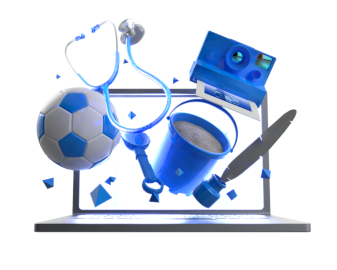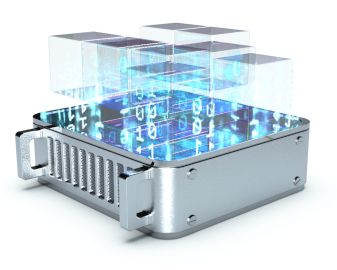l1l2l3l4l5l6l7l8l9l10l11l12l13l14l15l16l17l18l19l20l21l22l23l24l25l26l27l28l29l30l31l32l33l34l35l36l37l38l39l40l41l42l43l44l45l46l47l48l49l50l51l52l53l54l55l56l57l58l59l60
a1a2a3a4a5a6a7a8a9a10a11a12a13a14a15a16a17a18a19a20a21a22a23a24a25a26a27a28a29a30a31a32a33a34a35a36a37a38a39a40a41a42a43a44a45a46a47a48a49
c1c2c3c4c5c6c7c8c9c10c11c12c13c14c15c16c17c18c19c20c21c22c23c24c25c26c27c28c29c30c31c32c33c34c35c36c37c38c39c40c41c42c43c44c45c46c47c48c49c50c51
a1a2a3a4a5a6a7a8a9a10a11a12a13a14a15a16a17a18a19a20a21a22a23a24a25a26a27a28a29a30a31a32a33a34a35a36a37a38a39a40a41a42a43a44a45a46a47a48a49
s1s2s3s4s5s6s7s8s9s10s11s12s13s14s15s16s17s18s19s20s21s22s23s24s25s26s27s28s29s30s31s32s33s34s35s36s37s38s39s40s41s42s43s44s45s46s47s48s49s50s51s52s53s54s55s56s57s58s59s60s61s62s63s64s65s66s67
i1i2i3i4i5i6i7i8i9i10i11i12i13i14i15i16i17i18i19i20i21i22i23i24i25i26i27i28i29i30i31i32i33i34i35i36i37i38i39i40i41i42i43i44i45i46i47i48i49i50i51i52i53i54i55i56i57
t1t2t3t4t5t6t7t8t9t10t11t12t13t14t15t16t17t18t19t20t21t22t23t24t25t26t27t28t29t30t31t32t33t34t35t36t37t38t39t40t41t42t43t44t45t46t47t48t49t50t51t52t53t54t55t56t57t58t59t60t61t62t63t64t65t66t67t68
a1a2a3a4a5a6a7a8a9a10a11a12a13a14a15a16a17a18a19a20a21a22a23a24a25a26a27a28a29a30a31a32a33a34a35a36a37a38a39a40a41a42a43a44a45a46a47a48a49
m1m2m3m4m5m6m7m8m9m10m11m12m13m14m15m16m17m18m19m20m21m22m23m24m25m26m27m28m29m30m31m32m33m34m35m36m37m38m39m40m41m42m43m44m45m46m47m48m49m50m51m52m53m54m55m56m57m58m59m60m61
o1o2o3o4o5o6o7o8o9o10o11o12o13o14o15o16o17o18o19o20o21o22o23o24o25o26o27o28o29o30o31o32o33o34o35o36o37o38o39o40o41o42o43o44o45o46o47o48o49o50o51o52o53o54o55o56o57o58o59o60o61o62o63
n1n2n3n4n5n6n7n8n9n10n11n12n13n14n15n16n17n18n19n20n21n22n23n24n25n26n27n28n29n30n31n32n33n34n35n36n37n38n39n40n41n42n43n44n45n46n47n48n49n50n51n52n53n54n55n56n57n58n59n60n61n62
t1t2t3t4t5t6t7t8t9t10t11t12t13t14t15t16t17t18t19t20t21t22t23t24t25t26t27t28t29t30t31t32t33t34t35t36t37t38t39t40t41t42t43t44t45t46t47t48t49t50t51t52t53t54t55t56t57t58t59t60t61t62t63t64t65t66t67t68
e1e2e3e4e5e6e7e8e9e10e11e12e13e14e15e16e17e18e19e20e21e22e23e24e25e26e27e28e29e30e31e32e33e34e35e36e37e38e39e40e41e42e43e44e45e46e47e48e49e50e51e52e53
s1s2s3s4s5s6s7s8s9s10s11s12s13s14s15s16s17s18s19s20s21s22s23s24s25s26s27s28s29s30s31s32s33s34s35s36s37s38s39s40s41s42s43s44s45s46s47s48s49s50s51s52s53s54s55s56s57s58s59s60s61s62s63s64s65s66s67
s1s2s3s4s5s6s7s8s9s10s11s12s13s14s15s16s17s18s19s20s21s22s23s24s25s26s27s28s29s30s31s32s33s34s35s36s37s38s39s40s41s42s43s44s45s46s47s48s49s50s51s52s53s54s55s56s57s58s59s60s61s62s63s64s65s66s67
o1o2o3o4o5o6o7o8o9o10o11o12o13o14o15o16o17o18o19o20o21o22o23o24o25o26o27o28o29o30o31o32o33o34o35o36o37o38o39o40o41o42o43o44o45o46o47o48o49o50o51o52o53o54o55o56o57o58o59o60o61o62o63
r1r2r3r4r5r6r7r8r9r10r11r12r13r14r15r16r17r18r19r20r21r22r23r24r25r26r27r28r29r30r31r32r33r34r35r36r37r38r39r40r41r42r43r44r45r46r47r48r49r50r51r52r53r54r55r56r57r58r59r60r61r62r63r64r65r66
i1i2i3i4i5i6i7i8i9i10i11i12i13i14i15i16i17i18i19i20i21i22i23i24i25i26i27i28i29i30i31i32i33i34i35i36i37i38i39i40i41i42i43i44i45i46i47i48i49i50i51i52i53i54i55i56i57
a1a2a3a4a5a6a7a8a9a10a11a12a13a14a15a16a17a18a19a20a21a22a23a24a25a26a27a28a29a30a31a32a33a34a35a36a37a38a39a40a41a42a43a44a45a46a47a48a49
l1l2l3l4l5l6l7l8l9l10l11l12l13l14l15l16l17l18l19l20l21l22l23l24l25l26l27l28l29l30l31l32l33l34l35l36l37l38l39l40l41l42l43l44l45l46l47l48l49l50l51l52l53l54l55l56l57l58l59l60
m1m2m3m4m5m6m7m8m9m10m11m12m13m14m15m16m17m18m19m20m21m22m23m24m25m26m27m28m29m30m31m32m33m34m35m36m37m38m39m40m41m42m43m44m45m46m47m48m49m50m51m52m53m54m55m56m57m58m59m60m61
e1e2e3e4e5e6e7e8e9e10e11e12e13e14e15e16e17e18e19e20e21e22e23e24e25e26e27e28e29e30e31e32e33e34e35e36e37e38e39e40e41e42e43e44e45e46e47e48e49e50e51e52e53
r1r2r3r4r5r6r7r8r9r10r11r12r13r14r15r16r17r18r19r20r21r22r23r24r25r26r27r28r29r30r31r32r33r34r35r36r37r38r39r40r41r42r43r44r45r46r47r48r49r50r51r52r53r54r55r56r57r58r59r60r61r62r63r64r65r66
i1i2i3i4i5i6i7i8i9i10i11i12i13i14i15i16i17i18i19i20i21i22i23i24i25i26i27i28i29i30i31i32i33i34i35i36i37i38i39i40i41i42i43i44i45i46i47i48i49i50i51i52i53i54i55i56i57
a1a2a3a4a5a6a7a8a9a10a11a12a13a14a15a16a17a18a19a20a21a22a23a24a25a26a27a28a29a30a31a32a33a34a35a36a37a38a39a40a41a42a43a44a45a46a47a48a49
e1e2e3e4e5e6e7e8e9e10e11e12e13e14e15e16e17e18e19e20e21e22e23e24e25e26e27e28e29e30e31e32e33e34e35e36e37e38e39e40e41e42e43e44e45e46e47e48e49e50e51e52e53
s1s2s3s4s5s6s7s8s9s10s11s12s13s14s15s16s17s18s19s20s21s22s23s24s25s26s27s28s29s30s31s32s33s34s35s36s37s38s39s40s41s42s43s44s45s46s47s48s49s50s51s52s53s54s55s56s57s58s59s60s61s62s63s64s65s66s67





